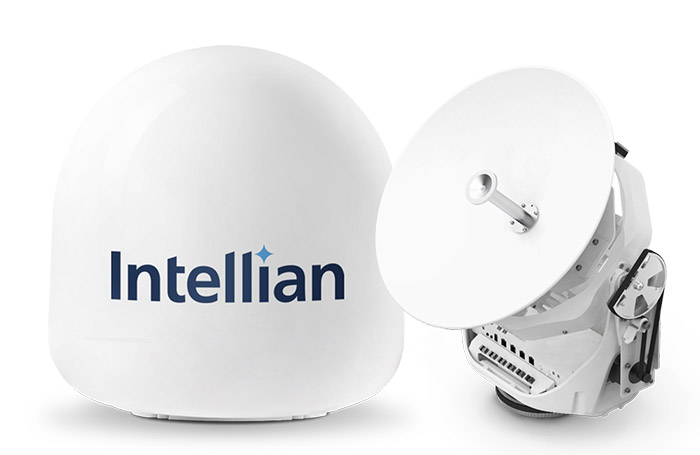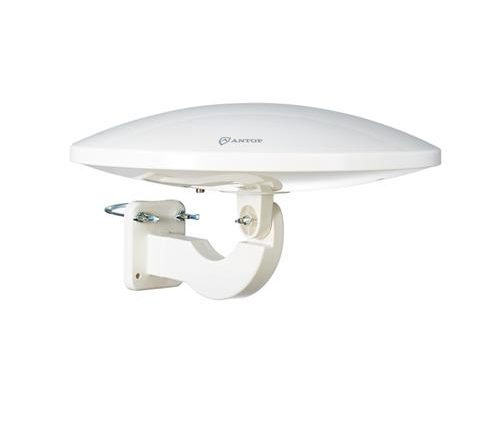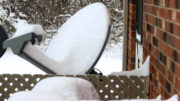This is an antenna. It’s our Antop UFO omnidirectional antenna. Maybe it’s like no antenna you’ve ever seen, but it’s still an antenna. You’ve probably noticed that antennas come in many different shapes depending on the job requirements. How can that be? Let’s take a closer look at the different kinds of antennas and see if we can clear this up.
Traditional-looking antennas
You’ve seen monopole antennas on radios and portable TVs, as well as older cell phones. They’re not very good, but they don’t take up a lot of space. The monopole antenna is pretty much limited to small electronics, so they’re not interesting to home theater folks.

The most common antenna, though, is the dipole. The one above is our Xtreme Signal HD8200XL, the largest antenna you can buy for over-the-air reception. The dipole antenna is a pair of wires that’s set so the entire length of the antenna is visible when pointed at the tower. The Xtreme Signal HD8200XL is technically a “hybrid log periodic yagi” antenna, which is really just a series of dipoles placed at specific distances so they don’t interfere with each other.
Bowtie and cat-whisker dipole antennas
You’ve probably seen antennas that are totally round. Technically they’re called “loop dipolles.” Loop dipoles do an excellent job of picking up UHF signals. So do “bowtie” antennas like this one:

This is our Xtreme Signal HDB4X. You’re thinking, “that doesn’t look like a pair of wires!” There’s a little more to this type of antenna, but at its heart it’s still a humble dipole. The antenna part is really just the X-shaped elements at the front. UHF antennas perform best when shaped like an X, because they do a better job of picking up more of the signal when the elements aren’t at right angles to each other.
The other part, the bars that go across… that’s called a reflector. When you point an antenna at the towers, the signal hits the front part of the antenna. If you use a reflector, it bounces the signal so that it also hits the back part of the antenna. This makes the antenna much more efficient. The reflector doesn’t need to be solid to work, and giving plenty of room for air to pass through makes the antenna more weather resistant.
Parabolic antennas
And then there’s…

This is an antenna, too. Just like in the UHF antenna, the actual antenna part is in the front, and a reflector concentrates all the signal into one spot. Dish antennas have a parabolic reflector which does a better job of focusing the signal into the tiny antennas in the front, and complicated electronics isolate the signal from the noise around it. This satellite antenna is pretty well-known to the people on this blog. Similar antennas have a white covering to keep the electronics safe in tough weather. They look like this:

An antenna’s design really depends on what it is supposed to pick up. Large Yagi antennas are most effective at picking up VHF signals, while the bowtie and loop designs really excel at UHF. Dish antennas are best for picking up satellite frequencies that are much, much higher than “terrestrial” broadcast. So you see, it’s all about what kind of signal you want to capture.
Need help choosing the right antenna?
Help is just a phone call away. You don’t need to know everything there is to know about antennas. You just need to know these numbers: 888-233-7563. When you call our corporate offices in Novi, Michigan, you’ll get an expert on the line who can help you choose the right antenna. We have hundreds of choices, and we can help you figure out which is best. Call us during East Coast business hours and we’ll give you the service you deserve.





